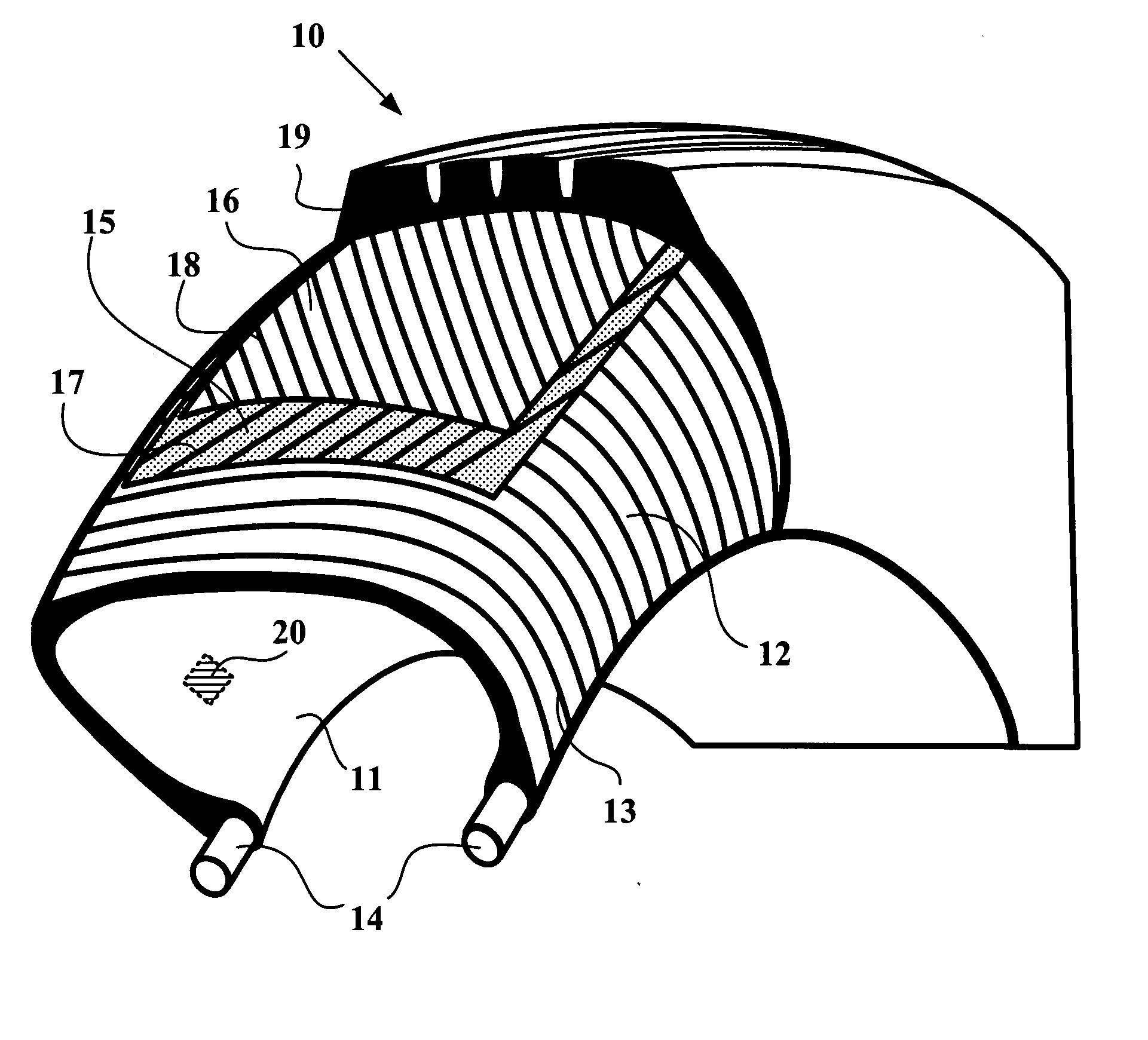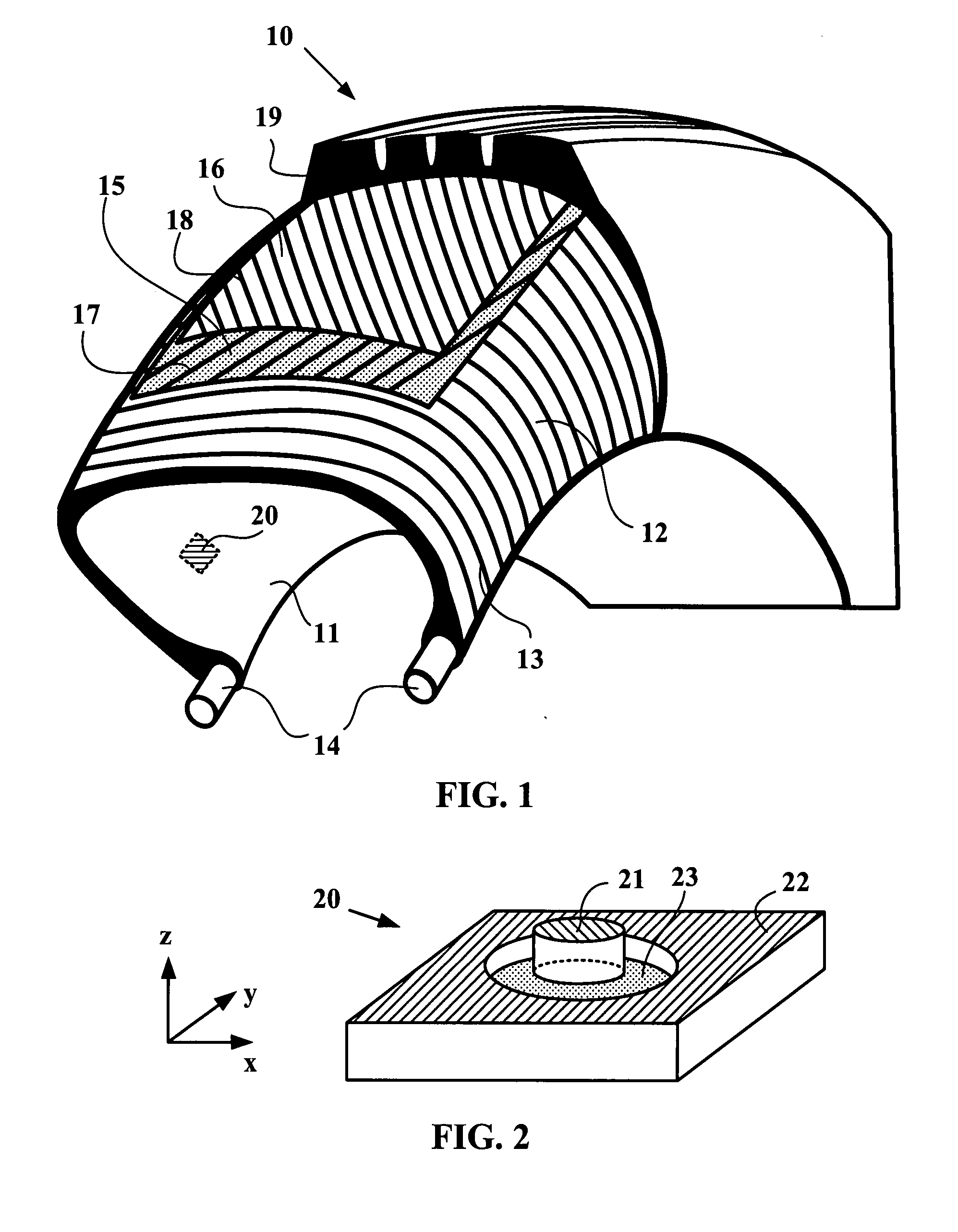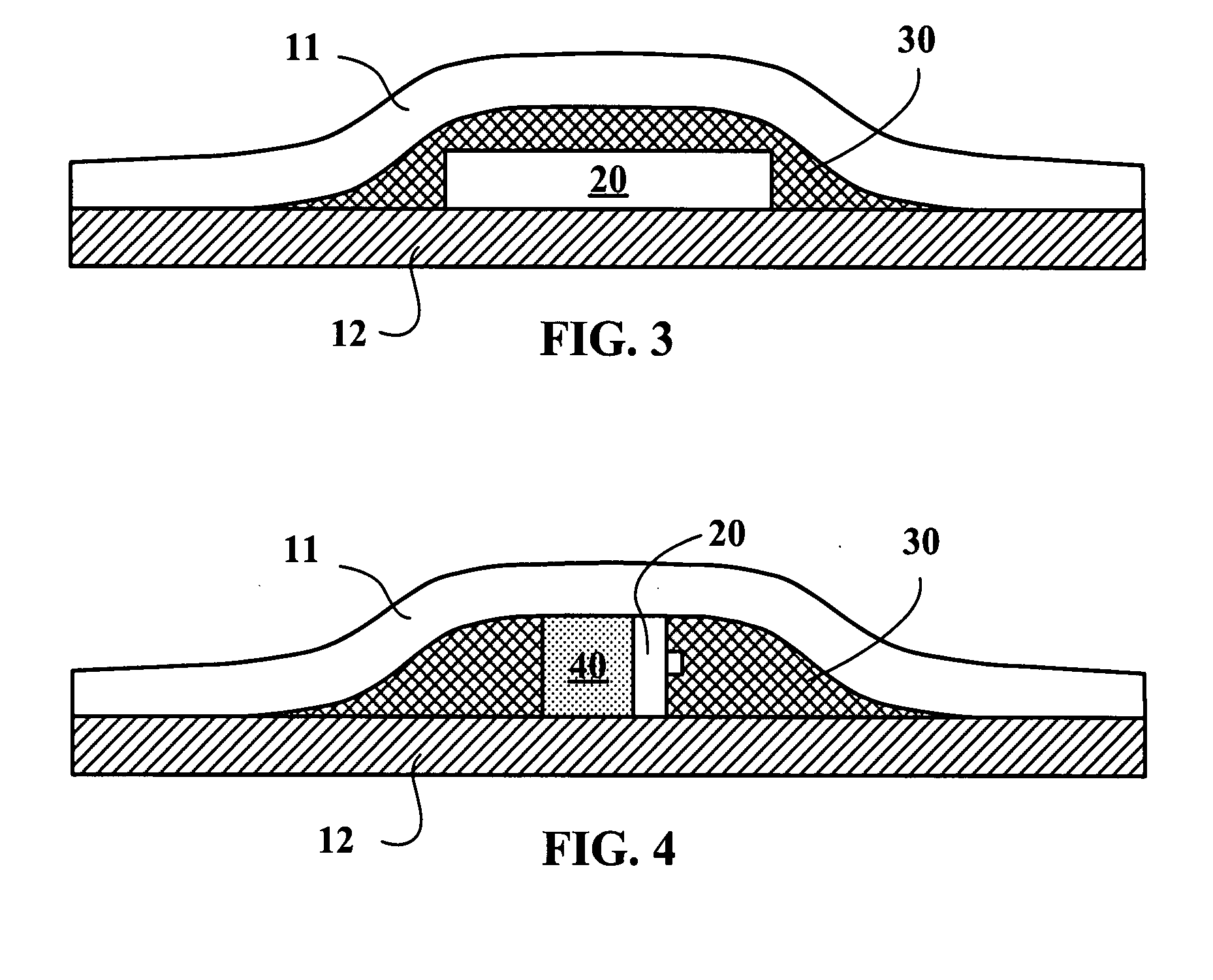Tire provided with a sensor placed between the carcass ply and the inner liner
a technology of strain sensor and inner liner, which is applied in the direction of tyre measurement, vehicle components, transportation and packaging, etc., can solve the problem of affecting the air tightness of the tyr
- Summary
- Abstract
- Description
- Claims
- Application Information
AI Technical Summary
Benefits of technology
Problems solved by technology
Method used
Image
Examples
Embodiment Construction
[0035]FIG. 1 is a schematic representation of a conventional tire 10, comprising an inner liner 11 of impermeable rubber, a carcass ply 12 consisting of threads 13 coated in rubber mix (that is to say rubber composition comprising at least one elastomer and a filler), circumferential reinforcements 14 which hold the tire 10 on the rim (not shown) and a crown reinforcement comprising two plies 15, 16. Each of the plies 15 and 16 is reinforced by cords 17 and 18, which are inclined relative to a plane perpendicular to the axis of rotation of the tire. A tread 19 is placed on the plies 15 and 16; it is this tread 19 which ensures contact between the tire 10 and the road. The tire is fitted with a sensor 20 which is placed between the inner liner 11 and the carcass ply 12 and whose structure is illustrated in the following Figures. The sensor 20 is shown by dotted lines, because it is covered by the inner liner 11.
[0036]FIG. 2 is a schematic representation of a three-dimensional strain...
PUM
 Login to View More
Login to View More Abstract
Description
Claims
Application Information
 Login to View More
Login to View More - R&D
- Intellectual Property
- Life Sciences
- Materials
- Tech Scout
- Unparalleled Data Quality
- Higher Quality Content
- 60% Fewer Hallucinations
Browse by: Latest US Patents, China's latest patents, Technical Efficacy Thesaurus, Application Domain, Technology Topic, Popular Technical Reports.
© 2025 PatSnap. All rights reserved.Legal|Privacy policy|Modern Slavery Act Transparency Statement|Sitemap|About US| Contact US: help@patsnap.com



